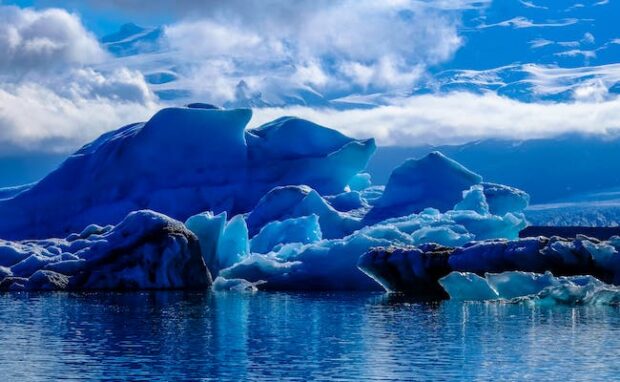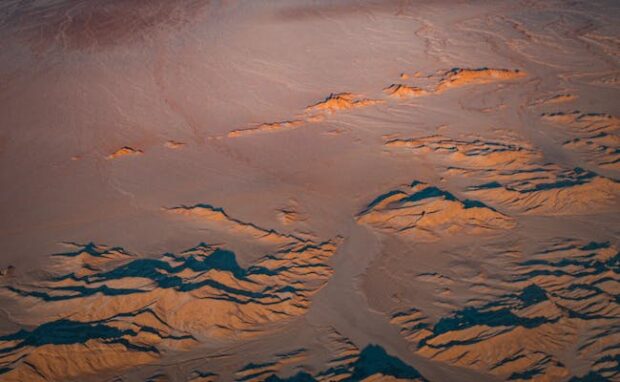Ancient landscape found under the East Antarctic Ice Sheet
You don’t often expect to find ancient lands underwater, but Durham University scientists found them using a unique method. They used radio-echo-sounding methods to a bat’s echolocation to discover 19,883 square miles of old land beneath the East Antarctic Ice Sheet. As a result, they may discover new details about the frigid region.
The ice seems to have preserved a version of the Earth that’s thousands of years old. Consequently, they may teach us many things about the world’s ancient history. Also, further research could help us see how the Ice Sheet could transform due to climate change. As a result, we could estimate how global warming would progress.
This article will discuss how Durham researchers found an ancient landscape under the East Antarctic Ice Sheet. Later, I will cover another instance of technology uncovering history.
How did the Durham scientists make their discovery?

The University of Durham researchers found the 32,000 square kilometer land mass with radio-echo-sounding techniques. It is a method that involves sending radio waves through the ice and measuring the time it takes for the signals to return.
Then, they confirmed it using satellite data, which revealed small undulations on the ice sheet’s surface. Scientists determined rivers shaped the ancient landscape roughly 14 million years ago.
That means the East Antarctic Ice Sheet probably started forming around 34 million years ago. Also, the terrain had ridges and valleys similar to the glacially-altered landscape of North Wales, UK.
Stewart Jamieson, professor in the Department of Geography at Durham University and the study’s lead author, said we know less of the land under the Ice than the surface of Mars.
“And that’s a problem because that landscape controls the way that ice in Antarctica flows, and it controls the way it might respond to past, present, and future climate change,” Jamieson said.
You may also like: How to try Google Search AI
The lead researcher noted his team is still investigating a small part of that landscape in more detail to gain more insights. “And what we find is an ancient land surface that has not been eroded by the ice sheet, and instead, it looks like it was created by rivers before the ice came along,” he stated.
Neil Ross, professor of polar science and environmental geophysics at Newcastle University and the study’s co-author, said it could help us prepare for climate change:
“It is remarkable that this landscape, ‘hidden in plain sight’ for many years, can tell us so much about the early and long-term history of the East Antarctic Ice Sheet, as well as help us to understand how it might evolve in response to future climate change.”
How AI uncovered another piece of history

Artificial intelligence helped discover more insights about another ancient landscape: Pompeii. A college student used AI to decipher a scroll that survived Mt. Vesuvius’ eruption.
The volcano erupted in AD 79, one of the most historical natural disasters in history, burying Pompeii, Herculaneum, and other Roman towns in ash. In the 1700s, experts found a scroll under six meters inside well-preserved ruins.
They found strange lumps of charcoal, which turned out to be thousand-year-old scrolls. However, extremely high temperatures decomposed the paper rolls, making it difficult to read their contents.
Nevertheless, they were adamant to learn from the relic. “Some 95% of the materials are from the classical period, so we just don’t have anything,” said Professor Brent Seales from the University of Kentucky’s EduceLab.
You may also like: Antarctic flowers spread due to climate change
He launched the Vesuvius Challenge to encourage other experts to help uncover the ancient scroll’s secrets. Eventually, college student Luke Farritor created a machine learning model to decipher its crackle patterns.
He discovered the word “porphyras,” the Greek word for “purple.” Professor Seales claimed, “This word is our first dive into an unopened ancient book, evocative of royalty, wealth, and even mockery.”
“What this particular scroll is discussing is still unknown, but I believe it will soon be revealed. An old, new story that starts for us with ‘purple’ is an incredible place to be,” he added.
Conclusion
University of Durham scientists discovered an ancient landscape underneath the East Antarctic Ice Sheet. Radio-echo-sounding and satellite data made the discovery possible.
The ice preserved the terrain, potentially helping scientists learn more about our world’s history. Also, it may help us estimate the growth of climate change.
Gain more information about the study by reading its Nature Communications webpage. Learn more about the latest digital trends at Inquirer Tech.